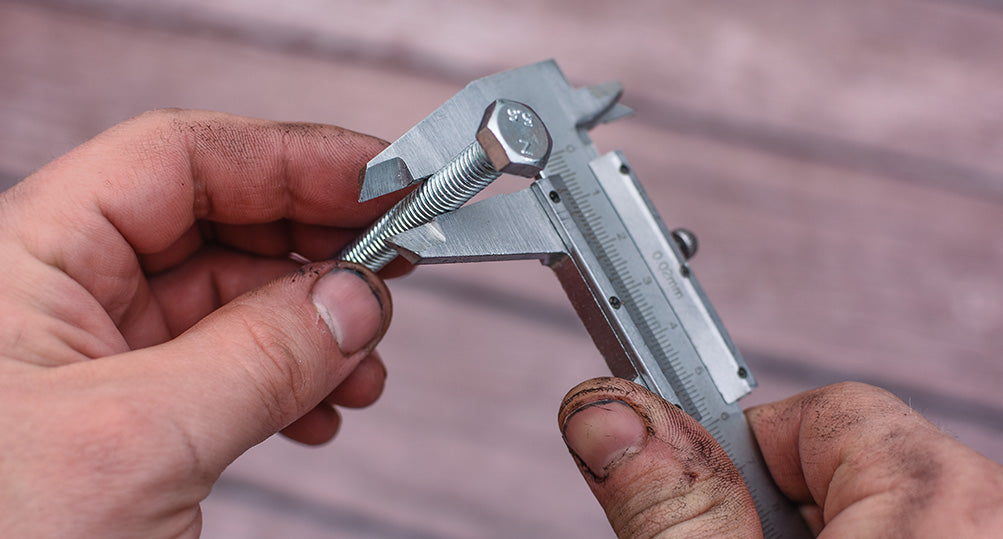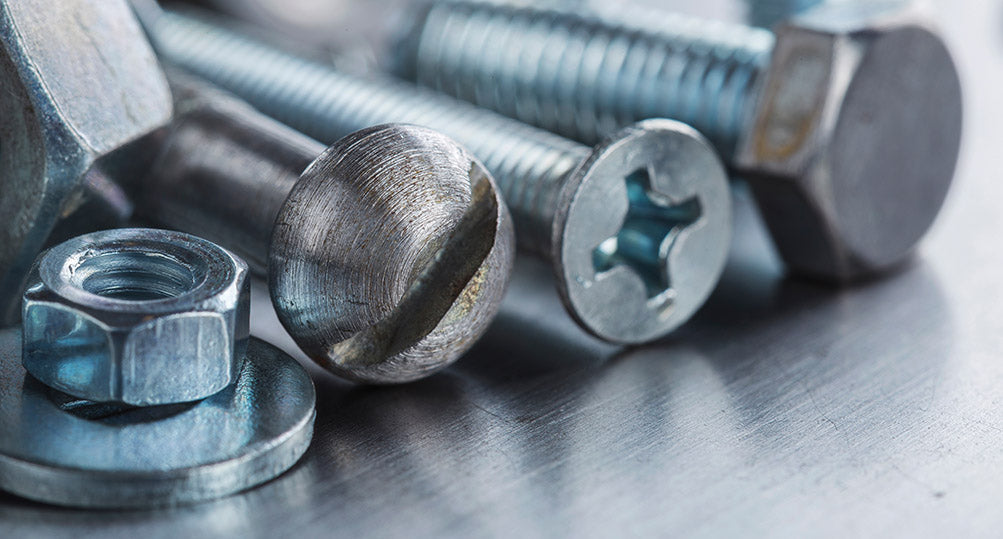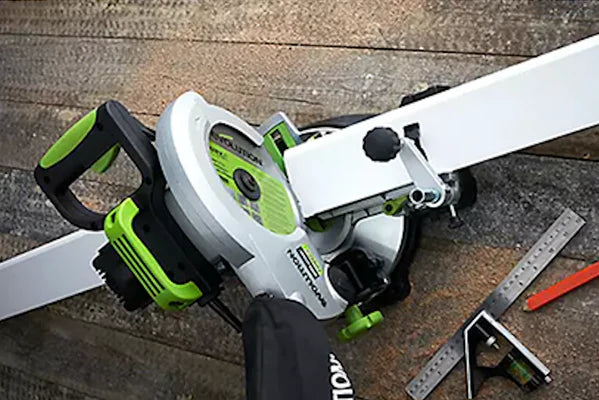Fasteners are available in an almost uncountable number of different shapes and sizes. One of the most common attributes that can help identify a fastener, is a drive type.
A fastener drive is a set of shaped cavities and protrusions on the fastener head that allows torque to be applied to it, typically also involving the corresponding tool, such as a screwdriver. Usually the drive serves a functional purpose, but sometimes its purpose is simply decorative.
Understanding the differences will help you decide which type to choose.
Slot
The slot screw drive has a single slot in the fastener head and is driven by a "common blade" or flat-bladed screwdriver. It was the first type of screw drive to be developed, and for centuries it was the simplest and cheapest to make. The slotted screw is still used in some applications where little torque is needed, but is not well suited to installation with power tools.
Cross
A cross or double-slot screw drive has two slots, oriented perpendicular to each other, in the fastener head; a slotted screwdriver is still used to drive just one of the slots. This drive's primary advantage is that they provide some measure of redundancy - should one slot be deformed in service, the second may still be used and the tool can not slip out.
Phillips
The Phillips screw design was developed as a direct solution to a number of problems with slotted screws: increased cam out potential; precise alignment required to avoid slippage and damage to driver, fastener, and adjacent surfaces; and difficulty of driving with powered tools.
Pozidriv
The Pozidriv is an improved version of the Phillips screw drive, and is designated "Type IA" by ANSI standards. It was specifically designed to allow more torque to be applied and greater engagement than Phillips drives. As a result, the Pozidriv is less likely to cam out.
Phillips Slotted
Some screws have heads designed to accommodate more than one kind of driver, sometimes referred to as combo-head or combi-head. The most common of these is a combination of a slotted and Phillips head, often used in attaching knobs to furniture drawer fronts. Because of its prevalence, there are now drivers made specifically for this kind of screw head.
Robertson (Square)
A Robertson, or square screw drive is specified as ANSI Type III Square Center and has a square-shaped socket in the screw head and a square protrusion on the tool, both of which have a slight taper. Robertson screwdrivers are popular in woodworking, and are easy to use one-handed, since the tapered socket tends to retain the screw, even if it is shaken.
Hex Socket
The hex socket screw drive has a hexagonal recess and may be driven by a hex (Allen) wrench, hex screwdriver or hex bit. Their lever arch mechanisms allows for increased tightening torque, and contact surfaces of the fastener are protected from external damage.
Hex Pin
A hex pin screw drive is a security drive that features an extruded pin to make the fastener more tamper resistant. By requiring a tool with a corresponding hole to drive the fastener, it can prevent attempts at turning the screw with a small flat-bladed screwdriver.
Torx (Star)
Torx drive fasteners feature a 6-point star-shaped pattern, designed to allow for higher torque with superior resistance to cam-out. Torx fasteners are commonly used in automobiles, computers, consumer electronics, and are becoming more popular in for use in construction applications.
Torx Pin
A Torx pin drive, also known as Security Torx or Tamper-Resistant Torx, features the same benefits as a standard Torx drive, but also includes a post in the centre of the head that prevents a standard Torx driver from being inserted. This is the most common type of security drive available.
One-Way
One-way fasteners can be turned only in one direction. They can be installed with a standard flat-blade screwdriver, but cannot be easily removed using standard tools. One-way screws are commonly used in commercial restroom fixtures and on vehicle registration plates, to prevent vandals from tampering with them.
Tri-Wing
Tri-wing fasteners, also known as triangular slotted fasteners, feature three slotted "wings" and a small triangular hole in the centre. Unlike the "tri-point" fastener, the slots are offset, and do not intersect the centre of the fastener. The design is usually seen on electronics equipment and sometimes in the aerospace industry.
Tri-Groove
Tri-groove is a security drive with a flat-topped conical head and three short, non-adjoining radial slots in the centre, and are installed using a special socket that grips the indentations along the outside to turn the fastener.
Spanner Head
The spanner fastener drive features two round holes opposite each other to prevent tampering. This type of drive requires a specialized driving tool called a "spanner driver", and is often seen in elevators and restrooms.



